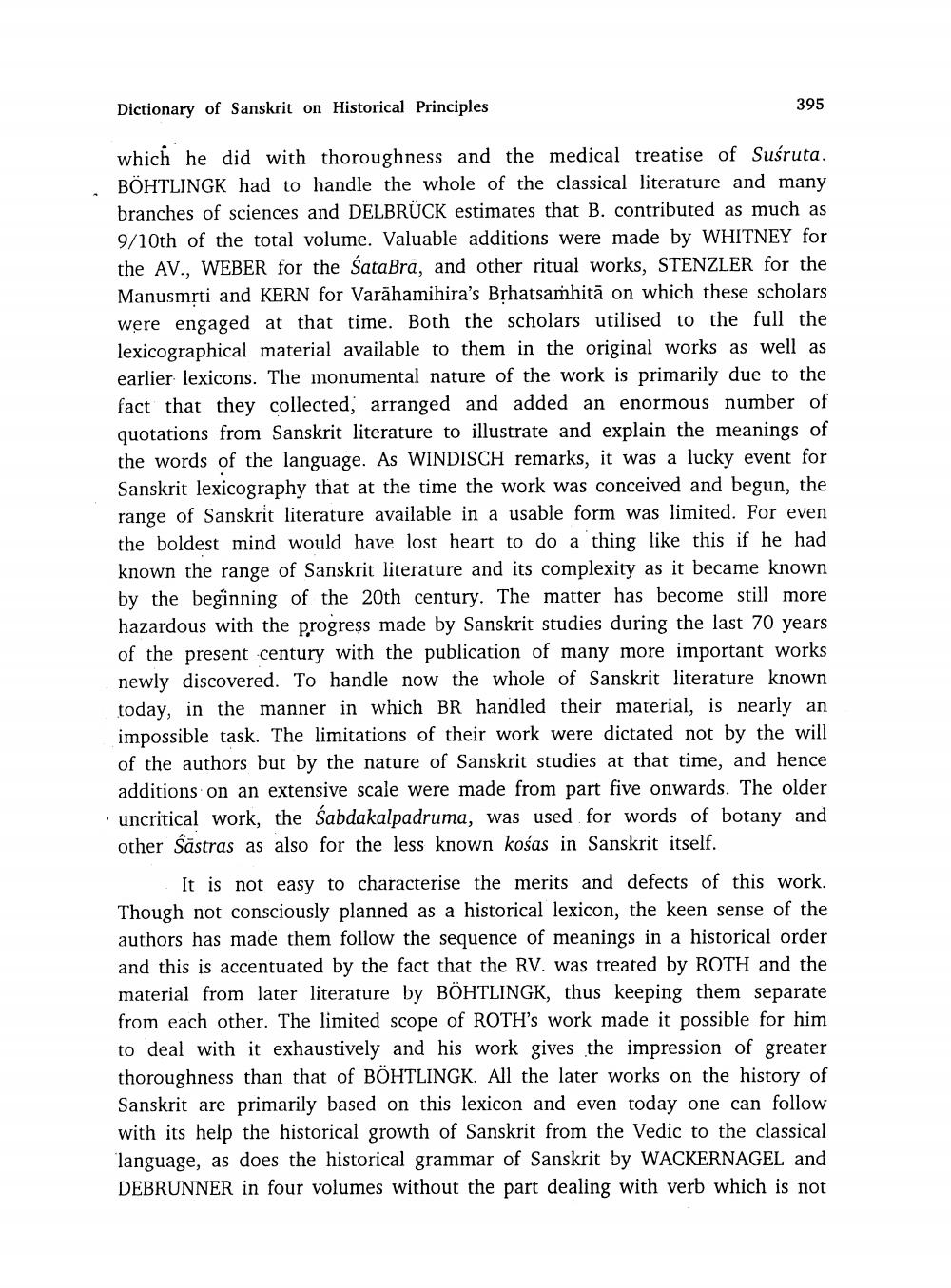________________
Dictionary of Sanskrit on Historical Principles
395
which he did with thoroughness and the medical treatise of Suśruta. BÖHTLINGK had to handle the whole of the classical literature and many branches of sciences and DELBRÜCK estimates that B. contributed as much as 9/10th of the total volume. Valuable additions were made by WHITNEY for the AV., WEBER for the ŠataBrā, and other ritual works, STENZLER for the Manusmrti and KERN for Varähamihira's Brhatsamhitā on which these scholars were engaged at that time. Both the scholars utilised to the full the lexicographical material available to them in the original works as well as earlier lexicons. The monumental nature of the work is primarily due to the fact that they collected, arranged and added an enormous number of quotations from Sanskrit literature to illustrate and explain the meanings of the words of the language. As WINDISCH remarks, it was a lucky event for Sanskrit lexicography that at the time the work was conceived and begun, the range of Sanskrit literature available in a usable form was limited. For even the boldest mind would have lost heart to do a thing like this if he had known the range of Sanskrit literature and its complexity as it became known by the beginning of the 20th century. The matter has become still more hazardous with the progress made by Sanskrit studies during the last 70 years of the present century with the publication of many more important works newly discovered. To handle now the whole of Sanskrit literature known today, in the manner in which BR handled their material, is nearly an impossible task. The limitations of their work were dictated not by the will of the authors but by the nature of Sanskrit studies at that time, and hence additions on an extensive scale were made from part five onwards. The older uncritical work, the Śabdakalpadruma, was used for words of botany and other Šāstras as also for the less known kośas in Sanskrit itself.
It is not easy to characterise the merits and defects of this work. Though not consciously planned as a historical lexicon, the keen sense of the authors has made them follow the sequence of meanings in a historical order and this is accentuated by the fact that the RV. was treated by ROTH and the material from later literature by BOHTLINGK, thus keeping them separate from each other. The limited scope of ROTH's work made it possible for him to deal with it exhaustively and his work gives the impression of greater thoroughness than that of BÖHTLINGK. All the later works on the history of Sanskrit are primarily based on this lexicon and even today one can follow with its help the historical growth of Sanskrit from the Vedic to the classical "language, as does the historical grammar of Sanskrit by WACKERNAGEL and DEBRUNNER in four volumes without the part dealing with verb which is not




